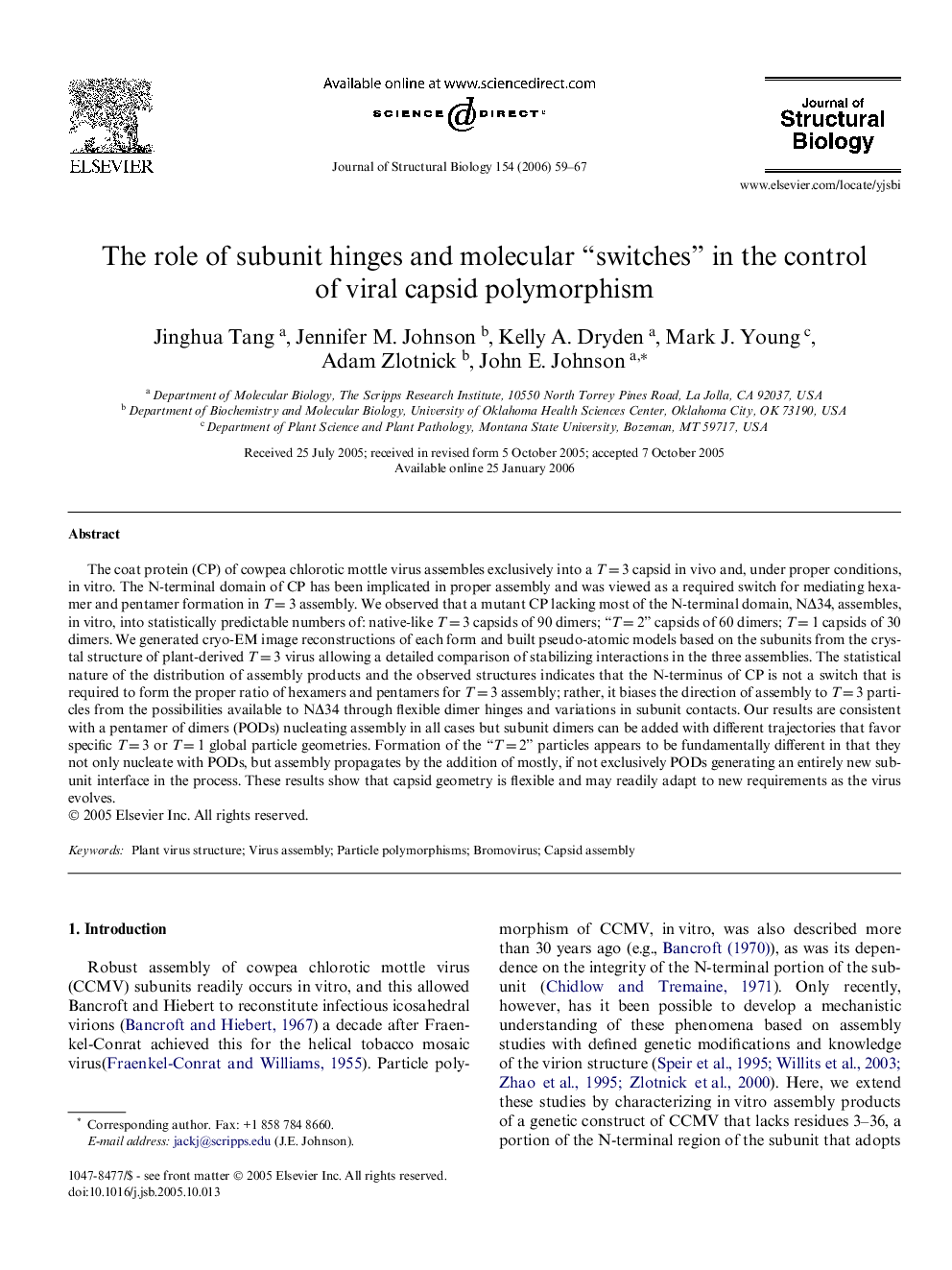| کد مقاله | کد نشریه | سال انتشار | مقاله انگلیسی | نسخه تمام متن |
|---|---|---|---|---|
| 2829527 | 1162812 | 2006 | 9 صفحه PDF | دانلود رایگان |

The coat protein (CP) of cowpea chlorotic mottle virus assembles exclusively into a T = 3 capsid in vivo and, under proper conditions, in vitro. The N-terminal domain of CP has been implicated in proper assembly and was viewed as a required switch for mediating hexamer and pentamer formation in T = 3 assembly. We observed that a mutant CP lacking most of the N-terminal domain, NΔ34, assembles, in vitro, into statistically predictable numbers of: native-like T = 3 capsids of 90 dimers; “T = 2” capsids of 60 dimers; T = 1 capsids of 30 dimers. We generated cryo-EM image reconstructions of each form and built pseudo-atomic models based on the subunits from the crystal structure of plant-derived T = 3 virus allowing a detailed comparison of stabilizing interactions in the three assemblies. The statistical nature of the distribution of assembly products and the observed structures indicates that the N-terminus of CP is not a switch that is required to form the proper ratio of hexamers and pentamers for T = 3 assembly; rather, it biases the direction of assembly to T = 3 particles from the possibilities available to NΔ34 through flexible dimer hinges and variations in subunit contacts. Our results are consistent with a pentamer of dimers (PODs) nucleating assembly in all cases but subunit dimers can be added with different trajectories that favor specific T = 3 or T = 1 global particle geometries. Formation of the “T = 2” particles appears to be fundamentally different in that they not only nucleate with PODs, but assembly propagates by the addition of mostly, if not exclusively PODs generating an entirely new subunit interface in the process. These results show that capsid geometry is flexible and may readily adapt to new requirements as the virus evolves.
Journal: Journal of Structural Biology - Volume 154, Issue 1, April 2006, Pages 59–67